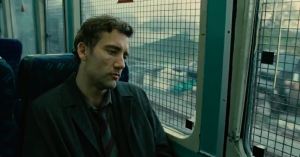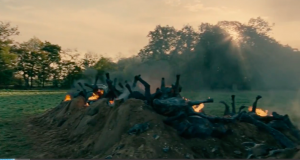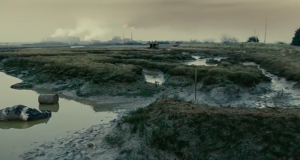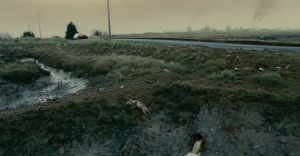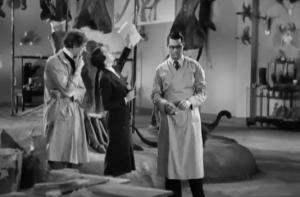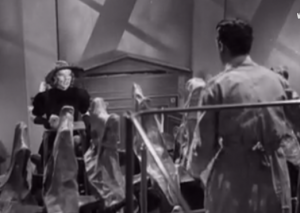I’ve used the first two minutes of this clip in my analysis.
Children of Men, directed by Alfonso Cuarón enraptures several different themes in today’s society giving credence to the damage that war can create internationally and externally, while entertaining the idea of what infertility can do to a dominant species in society. A significant scene towards the end of the film, expresses just how important the role of women and children are in times of distress. In this scene (which roughly being around 1:31:00) main character Theo is shielding Kee and her newborn child from multiple gunshots from outside. He is shown trying to get her out of the building and far from harm’s way. However, in this scene of heavy warfare, there is a momentary ceasefire and the Fugees (immigrants), counteracting militia, and military soldiers take a moment to observe the child. Through study of Mise-en-Scéne, cinematography, and editing, one can further understand the significance of this scene and what meaning it gives to the film as a whole and the role of its characters.
Mise-en-Scéne
This scene is incredibly realistic as people have seen war footage and the damage that it can do to a building. In this scene, sounds of gunfire and bombs are continuously going off in the background and lends to the reason why the walls are shot up and the building is in disarray. There are several misplaced bricks in the background used as props and the characters are covered in dust from the the has ricocheted of the wall from gunshots and destruction. Their clothes are very worn and bloody from their own wounds or other’s blood. More importantly, when the camera continues to switch between Theo’s point of view as he’s walking down the hallway and what is behind, you can see a wounded woman sitting on the ground, and notice people behind them still being shot at. This signifies that a war is still occurring despite the visual of people actually shooting. When a man approaches them at the steps, he is holding a gun to both Kee and Theo. This prop not only connects us to the background sound but amplifies the dangers to come outside of the building they are trying to leave from. To the next group of soldiers who continue to ceasefire, we see their expressions change. Like the intial man with the guy, the soldiers’ faces change to one of determination to awe as they gawked at the baby Kee clutched to her body. Without the continuous presence of the supporting actors stopping in the tracks as they interacted with Kee and her baby, it would be hard to identify that the baby was the most significant factor in the scene. Further, the costuming of Kee, Theo, and the Fugees in contrast to protestors with Guns and the military, allowed us to see the different positions each character played and how vulnerable Kee and Theo were to being harmed.
Cinematography
With heavy observation, I’d argue that scene was recorded with handheld shots because the camera remained slightly unsteady causing tension and anticipation. In addition, there were several following shots, and a lot of refocusing and cuts to display the expressions of Theo and Kee and the expressions of the Fugees and people shooting. In the beginning of this scene, there is a shallow focus on Kee and Theo, which signifies the baby they are protecting is most important. However, the shot is still long enough to capture the mayhem around them and show what dangers they encounter. Where ever, Theo and Kee move the camera follows. For example, as they fall to the ground the camera tracks their movements and remains low until they get back up again. While they are down, the camera remains low, but angled upwards towards the two. The camera continues to slightly shake which instills a feeling of uncertainty in viewers as you are forced to wonder what is going to happen next. It then begins to zoom-in to Theo’s face as his expression changes and forces you to wonder what he is looking at.
